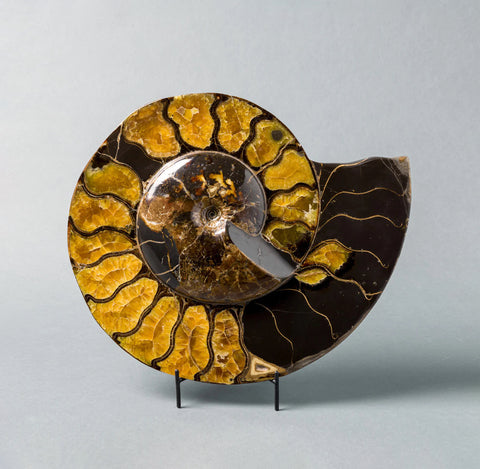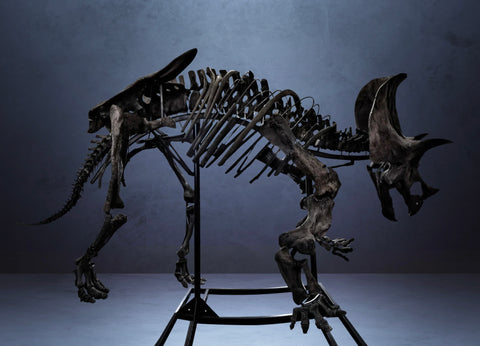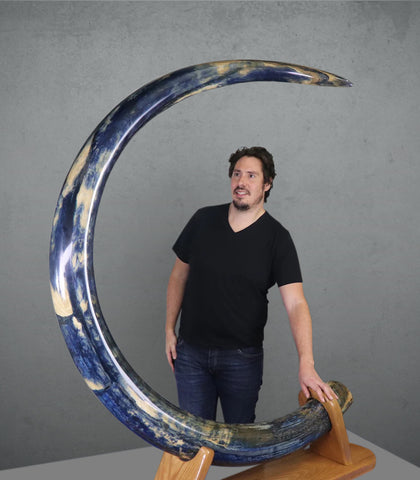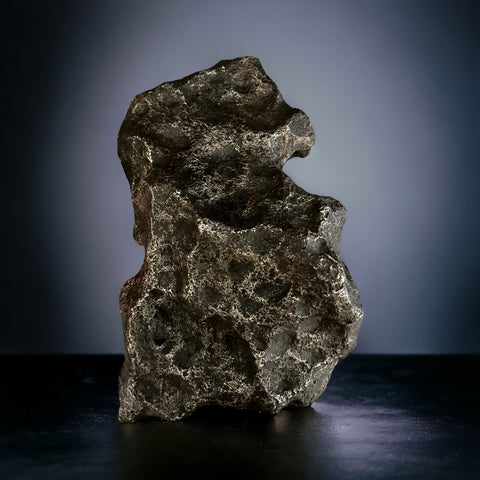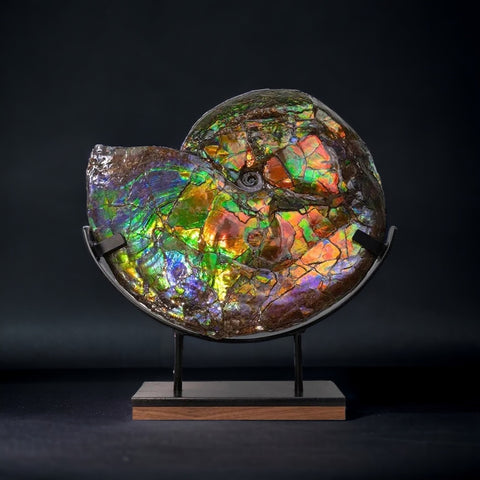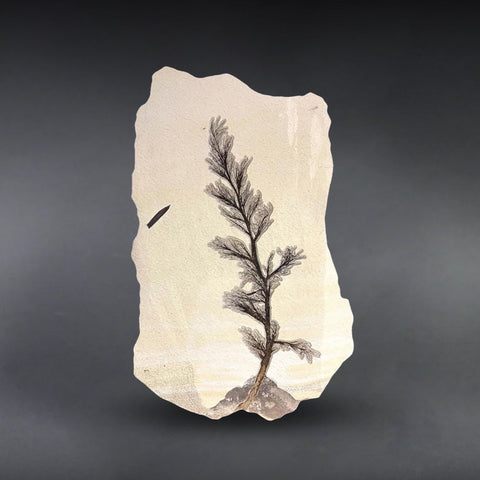Beautiful Craspedodiscus Ammonite - 15.5"
This piece has been sold, but we may have a similar item available. Contact us online to make an inquiry.
This rare and beautiful ammonite (Craspedodiscus sp.) was collected on the banks of the Volga River in Russia and dates back 145 million years.
This piece was meticulously sliced and polished to reveal breathtaking chambers lined with "Volga River Amber," technically called simbercite.
The contrasting dark black matrix is argillite, a sedimentary rock.
It has a fiery red opal iridescence (difficult to capture in photos) on the outer shell and centre of the front face. This specimen is an absolutely stunning piece of natural history!
Ammonites have intrigued and fascinated humans for thousands of years. Many cultures - from Australian aboriginals to the ancient Egyptians - collected and treasured these prehistoric and beautiful fossils. Perhaps their lure has something to do with the Fibonacci spiral pattern of their shell, which mirrors the galaxies.
Ammonites belong to the Mollusca Phylum in a Class known as Cephalopods – “head-footed” creatures such as octopus and squid. They swam in ancient oceans from 400 million years ago, to their extinction, along with the dinosaurs, 65 million years ago.
Ammonites were free floating invertebrates that were attacked by plesiosaurs and mosasaurs, two groups of gigantic marine reptiles. One way that ammonites could avoid an attack was to quickly change their buoyancy levels, zig zagging and sinking rapidly.
These incredible prehistoric animals ranged in size from tiny species only a few centimetres in diameter to the monstrous Cretaceous ammonite, Parapuzosia seppenradensis, which grew to about 3 meters and would probably weigh close to 1500 kilograms!
Certificate of authenticity included
Stand included.
Measures 15.5 x 13 x 3.5 inches / 35.5 cm x 33 x 4.3 cm and the combined weight is 27.7 lbs. / 12.55 kg.

